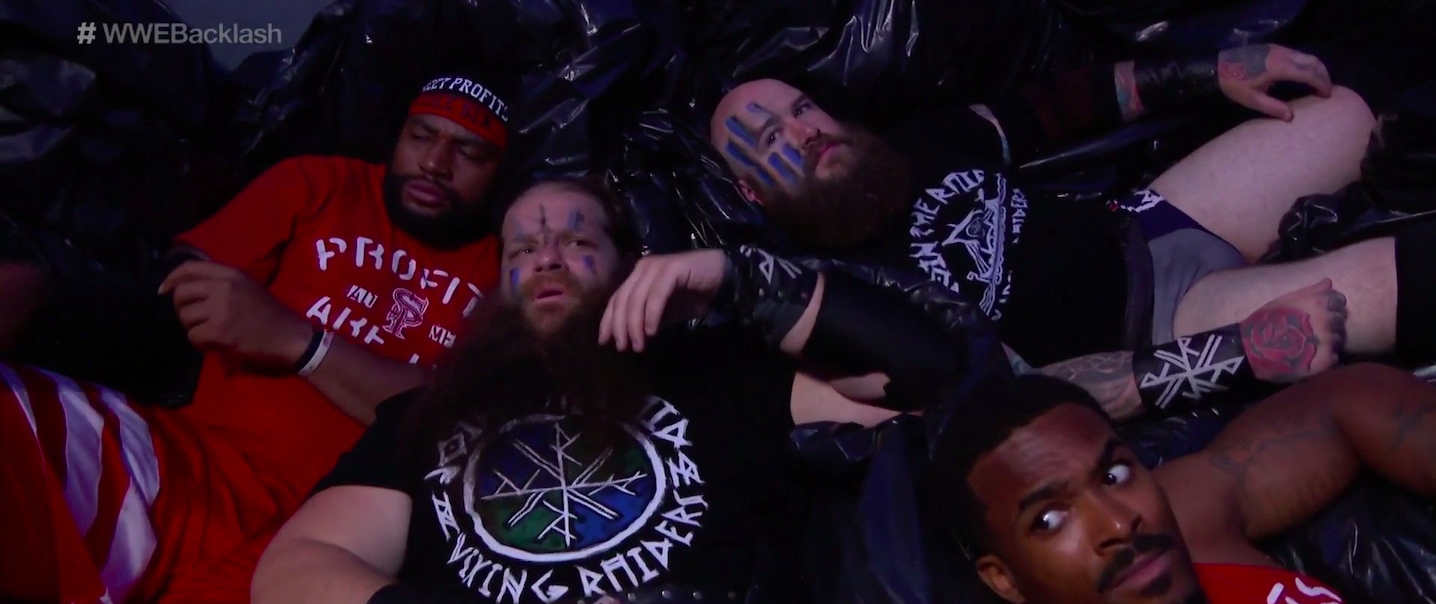Mattress covers, pajama sets, even a cooling lotion — everything it might take to cool you down in bed…well, as cool as a stud like you could get.

Category Added in a WPeMatico Campaign


Here are your quick and dirty, editorial-free WWE Backlash 2020 results. The show featured The Greatest Wrestling Match Ever , and other, presumably less successful wrestling matches. Make sure you’re here tomorrow for the complete Best and Worst of Backlash column.
, and other, presumably less successful wrestling matches. Make sure you’re here tomorrow for the complete Best and Worst of Backlash column.
WWE Backlash results:
1. Kickoff Show Match for the United States Championship: Apollo Crews (c) defeated Andrade. Angel Garza accompanied Andrade to the ring, so Kevin Owens sat in on commentary to even the odds. Owens hit Garza with a Stunner, and Crews countered the Hammerlock DDT into a Toss Powerbomb to retain the championship.
2. Women’s Tag Team Championship Triple Threat Match: Sasha Banks and Bayley (c) defeated Alexa Bliss and Nikki Cross and The IIconics. Bliss hit Twisted Bliss on Peyton Royce, but Sasha Banks rolled Bliss out of the pin into a pin of her own to win the match.
– WWE’s next pay-per-view will be Extreme Rules on July 19.

3. Sheamus defeated Jeff Hardy. Hardy tried to run along the security railing and dive onto Sheamus, but got Brogue Kicked. Back in the ring, Sheamus hit a second Brogue Kick for the win.
4. Raw Women’s Championship Match: Asuka (c) vs. Nia Jax ended in a double count-out.
5. Handicap Match for the Universal Championship: Braun Strowman (c) defeated The Miz and John Morrison. Miz and Morrison looked to have the match won after a Skull-crushing Finale and double stomp combination, but Miz broke up Morrison’s pin. With the team’s momentum ruined, Strowman pinned Morrison after a powerslam.
6. Universal Championship Match: Drew McIntyre (c) defeated Bobby Lashley. Lashley gained an early advantage by locking in the full nelson on McIntyre before the bell rang. After a competitive match, Lana showed up and caused a distraction, allowing McIntyre to hit the Claymore and retain the championship.
– The advertised Raw Tag Team Championship match between the Street Profits and the Viking Raiders turned out to be an extended backstage skit that saw them fight through the parking lot and backstage area. This turned into broad comedy involving sword fights, Akira Tozawa showing up with a gang of motorcycle ninjas for some reason, and multiple flashback dream sequences. It ended when all four men fell in the trash and were threatened by what appeared to be an alligator that growled like a tiger. I promise I did not do drugs before typing this paragraph.
#VikingProfits … now might be the time to RUN. #WWEBacklash pic.twitter.com/x74Hepf1dx
— WWE Universe (@WWEUniverse) June 15, 2020
7. Randy Orton defeated Edge in the Greatest Wrestling Match Ever . This match was presented with “unique camera angles and enhanced audio,” meaning it had canned crowd noise. Both men were introduced by a voiceover from the late Howard Finkel, and referee Charles Robinson delivered pre-match rules while wearing the old WWF referee outfit. Orton kicked out of multiple spears, and Edge kicked out of multiple RKOs. After about 45 minutes, Orton countered Edge’s Anti-Venom submission with a low blow and punted him to win the match.
. This match was presented with “unique camera angles and enhanced audio,” meaning it had canned crowd noise. Both men were introduced by a voiceover from the late Howard Finkel, and referee Charles Robinson delivered pre-match rules while wearing the old WWF referee outfit. Orton kicked out of multiple spears, and Edge kicked out of multiple RKOs. After about 45 minutes, Orton countered Edge’s Anti-Venom submission with a low blow and punted him to win the match.